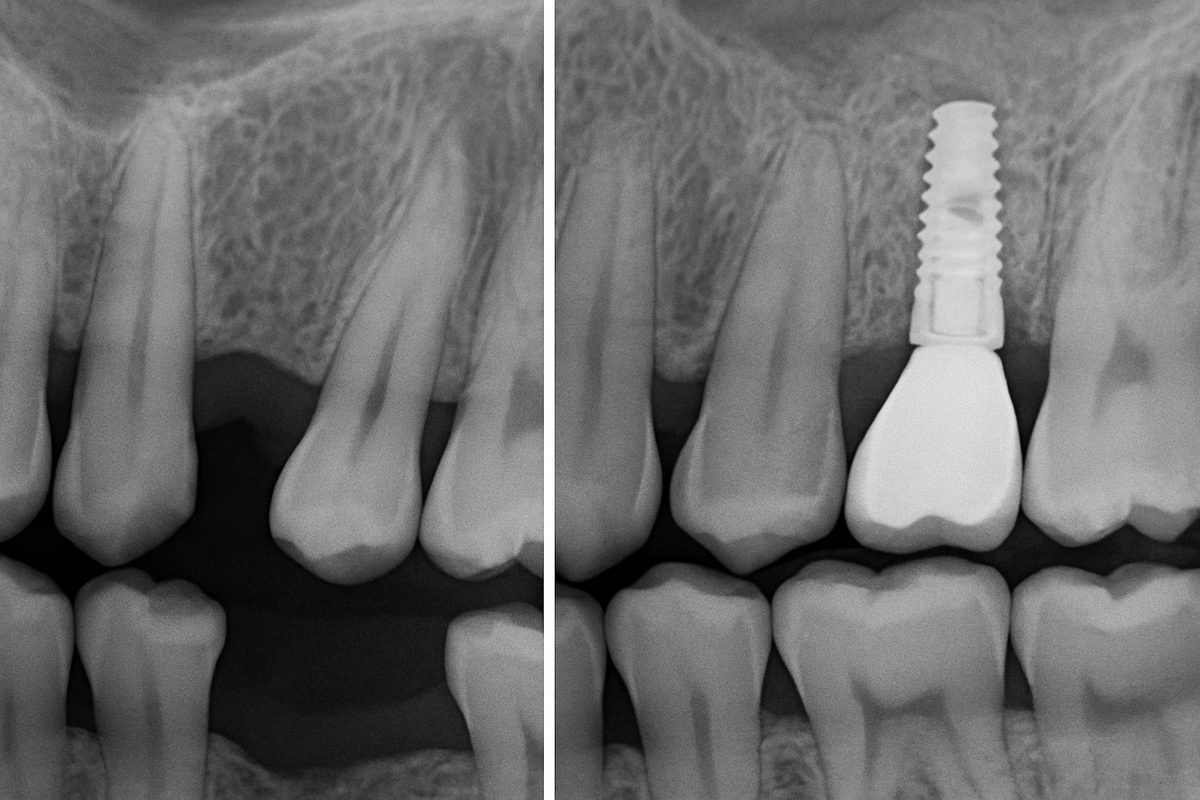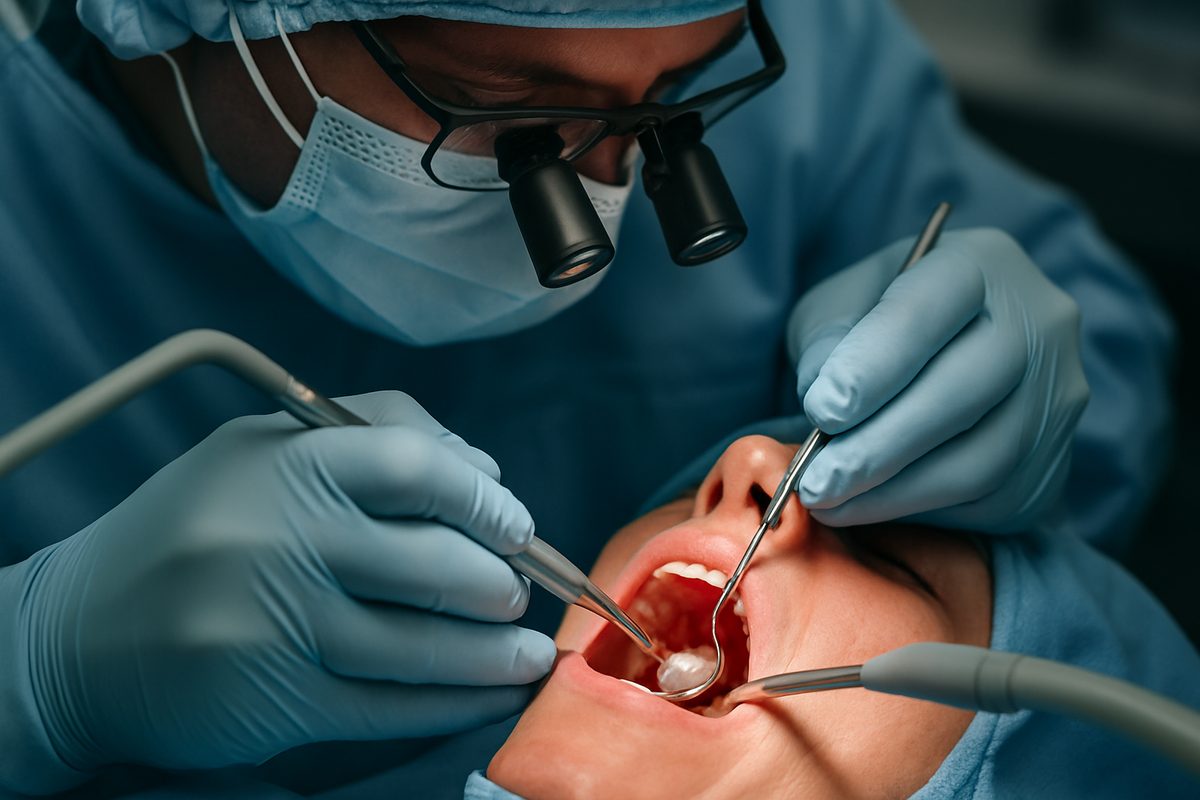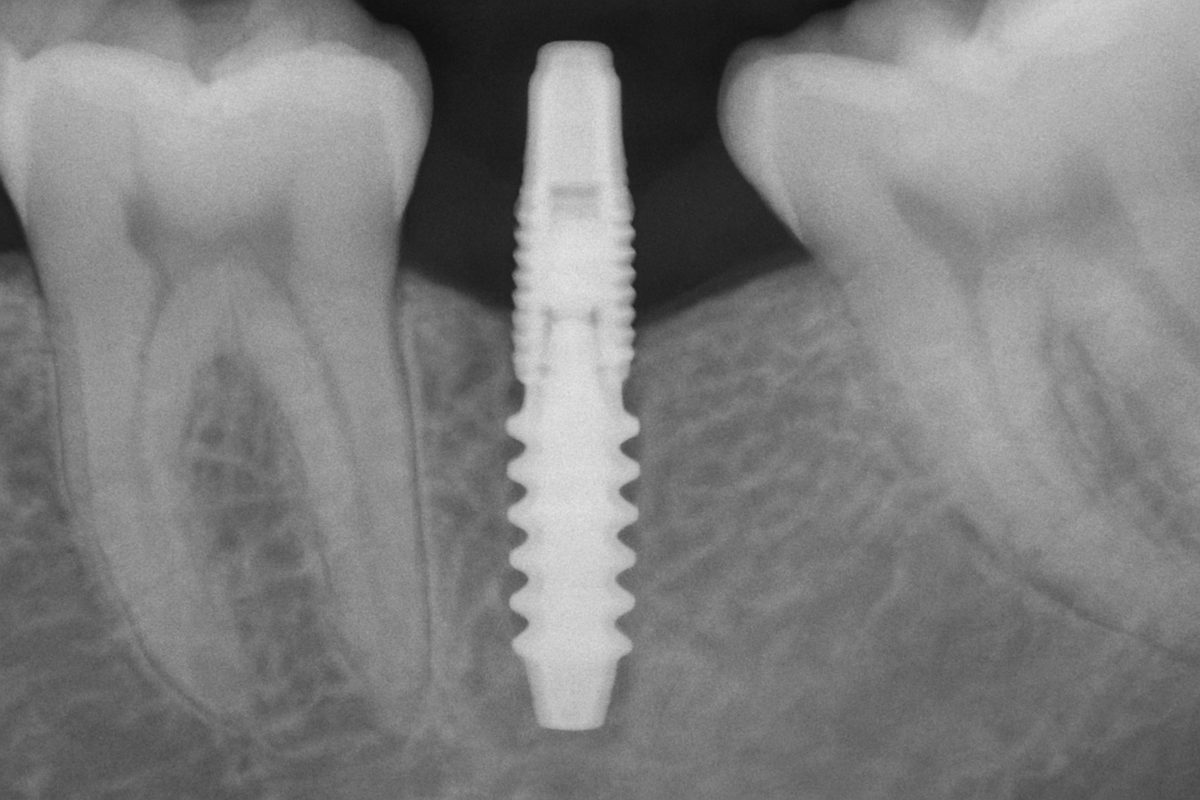Blog - St. Louis, MO
Tips, Facts, And The
Latest In Dentistry

Is Bone Grafting With Implant Placement Right For You?

Deciding whether a bone graft with implant placement is right for you can feel overwhelming. This guide explains what a bone graft with implant placement is, common signs you might need one, the types of grafts, what to expect during recovery, and the questions to ask your implant dentist. If you’re missing teeth or were told your jawbone is too thin for implants, this will help you understand your options and next steps.
What is a bone graft with implant placement?
A bone graft with implant placement is a procedure that rebuilds lost jawbone so a dental implant has enough support. Sometimes grafting is done first and the implant is placed later after the graft heals. Other times the graft and the implant are placed during the same surgery. The goal is the same: create stable bone around the implant so it can fuse and last long-term.
When you hear “bone graft with implant placement in St. Louis,” it often means the practice uses local imaging and planning to decide whether the graft and implant happen together or in stages.
Why might you need a bone graft?
Bone loss from missing teeth
When a tooth is lost, the jawbone where the tooth root used to be begins to shrink or resorb. Over months to years this can leave too little bone for an implant to hold securely. A bone graft restores that volume so an implant can be stable and strong.
Periodontal disease, trauma, or congenital defects
Chronic gum disease, facial injury, or developmental defects can also reduce bone height or width. In these cases a bone graft with implant placement in St. Louis may rebuild the missing structure before or during implant surgery.
Types of bone grafts used with implants
Autograft, allograft, xenograft, and synthetic options
- Autograft — bone taken from your own body (chin, hip). Best biological match and healing, but requires a second surgical site and more recovery.
- Allograft — donor human bone processed for safety. No second surgical site and good success rates; slightly slower integration than autograft.
- Xenograft — bone from animals (usually bovine) processed for use. Good scaffold for new bone, often used with other materials.
- Synthetic — manufactured materials (calcium phosphates, bioceramics). No disease risk, predictable supply, and lower cost in some cases.
Choice of material affects healing time, cost, and whether the implant can be placed immediately. Your surgeon will recommend the best option for your situation.
What to expect during and after a bone graft with implant placement
Procedure steps and anesthesia/sedation options
Typical steps include planning with 3D imaging, administering local anesthesia and optional sedation, making an incision to expose bone, placing graft material, sometimes placing a membrane over the graft, and closing the site with sutures. If an implant is placed at the same time, it will be positioned to maximize support. Sedation choices range from nitrous oxide to oral or IV sedation for comfort.
Recovery timeline and possible complications
Healing can take weeks to several months depending on graft size and material. Small grafts may integrate in 3–4 months; larger grafts can take 6 months or more before an implant is placed or fully loaded. Expect swelling, mild discomfort, and some dietary changes early on. Watch for warning signs like increasing pain, fever, heavy bleeding, or persistent drainage—these can signal infection or graft failure and should be reported promptly.
Who is a good candidate?
Good candidates are generally healthy adults who want stable implants but have insufficient bone volume. Factors that influence candidacy include smoking, uncontrolled diabetes, active gum disease, and medications that affect bone healing. A 3D CBCT scan is essential to measure bone and plan whether a bone graft with implant placement in St. Louis can be done immediately or if staged treatment is safer.
Questions to ask your implant dentist about a bone graft with implant placement
- Which graft material do you recommend and why?
- Will the graft and implant be done at the same appointment?
- Do you use CBCT imaging and guided surgery for planning?
- How many graft + implant cases have you done?
- What is the estimated timeline and cost, including follow-up visits?
- What sedation options and aftercare instructions do you provide?
Why consider New You Smile for bone graft with implant placement?
New You Smile in St. Louis offers experienced implant care led by Dr. James Fetsch, who has placed tens of thousands of implants. The practice uses 3D CBCT imaging, X-Nav guided surgery, and an on-site lab to plan and deliver predictable graft and implant results. Their private surgical suite and sedation options help make the procedure comfortable and efficient.
Next steps: getting evaluated
If you think you may need a bone graft with implant placement, schedule a consultation for a 3D scan and personalized plan. Bring a list of medications, any dental records or X-rays you have, and a summary of your medical history. Expect an exam, CBCT imaging, and a clear treatment timeline so you can decide with confidence.



